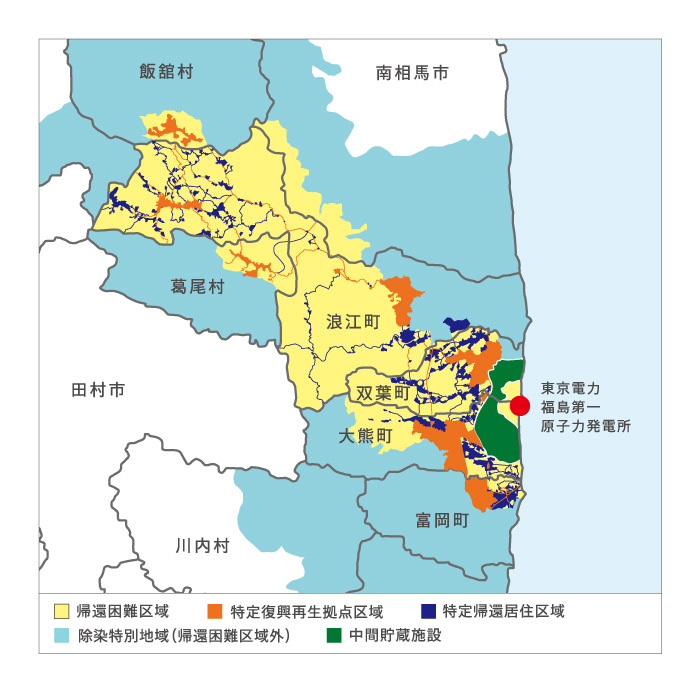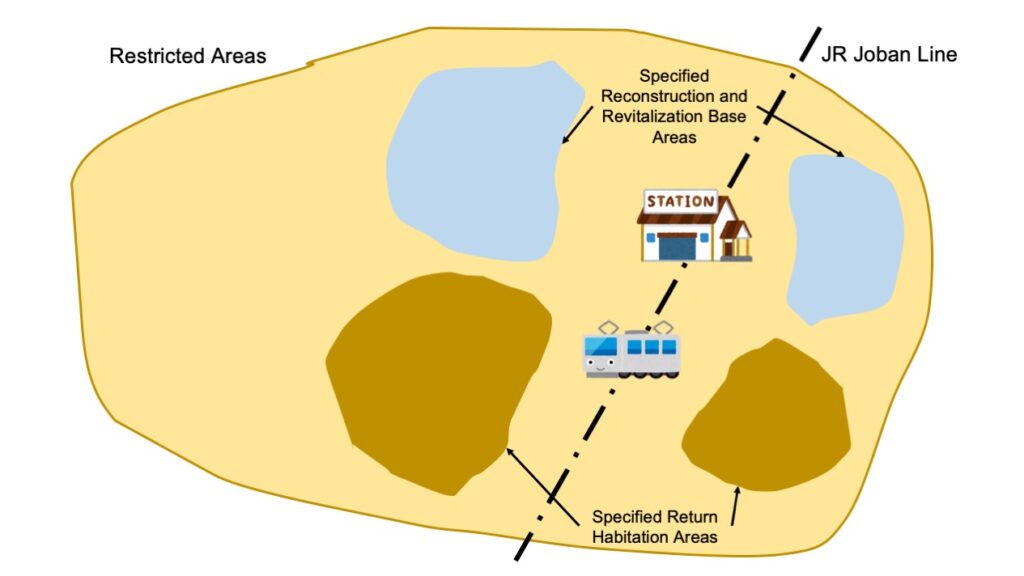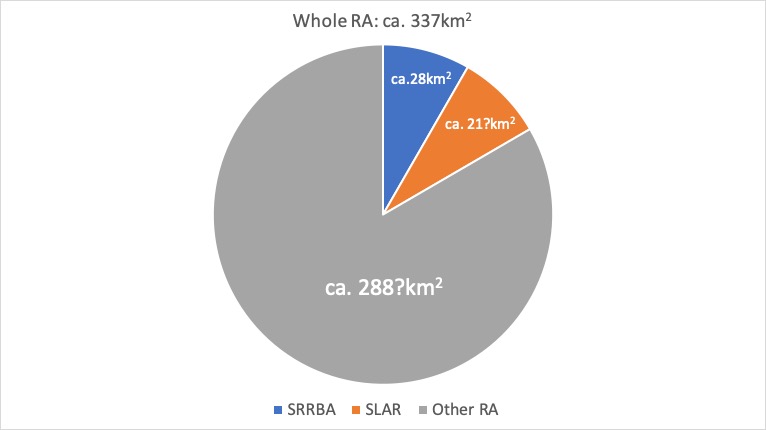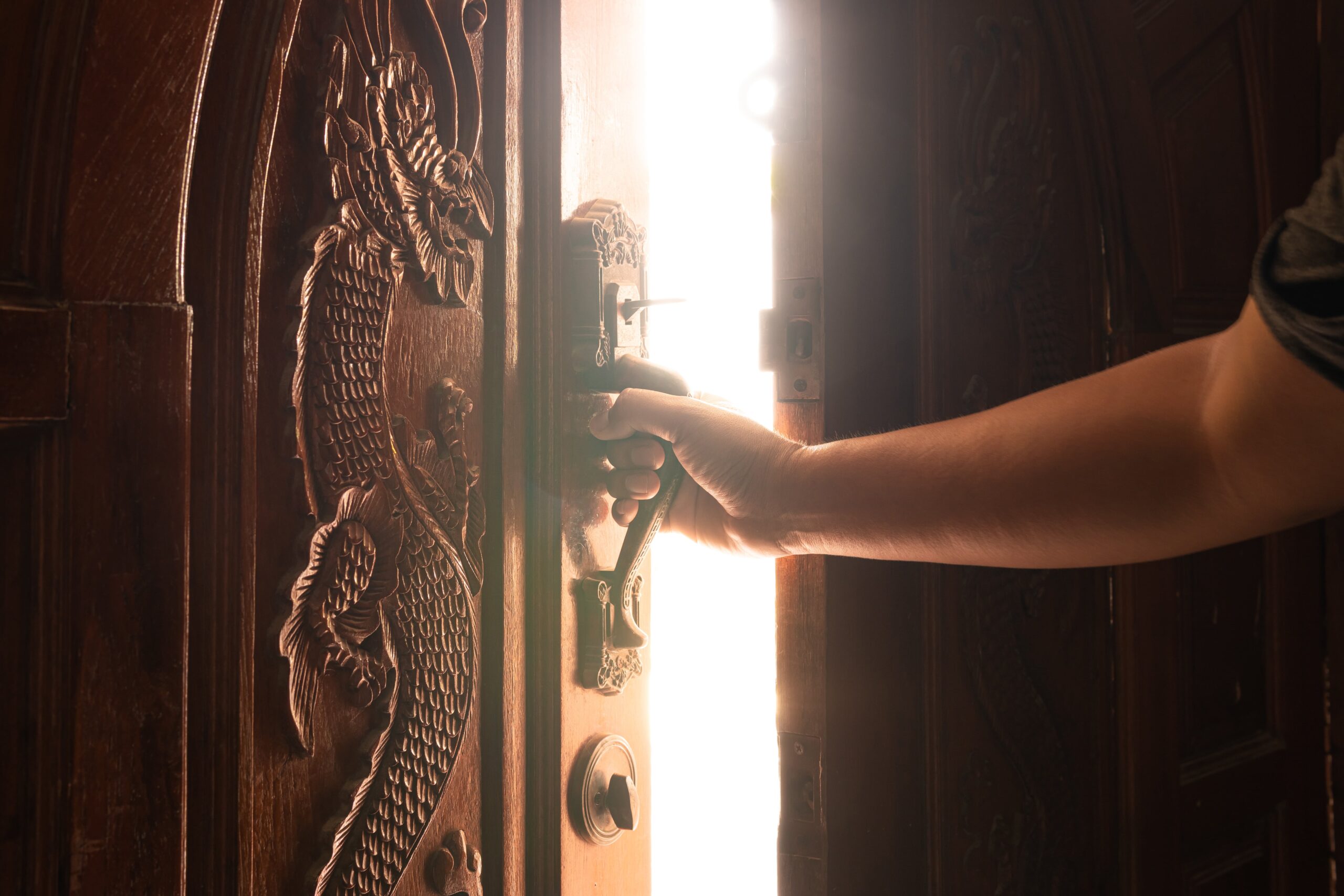Hello, everyone. My name is Daichi, an expert providing the information about the radiation issues in an easy-to-understand manner.
In this article and this article, with regard to the Restricted Areas, the changes overtime after its establishment to this date, after the accident of the Fukushima Daiichi NPS, the definition of the areas as well as overview and progress for construction of the Specified Reconstruction and Revitalization Base Areas (SRRBA) were elaborated.
This article will cover measures for the remaining Restricted Areas, specifically, ‘the Specified Living Areas for Returnees (SLAR)’ and future issues to be addressed.
In other words, this article covers the following questions:
– What is the Specified Living Areas for Returnees?
– What will happen in the Restricted Areas toward the future?
Table of contents of this article
- (What is the SLAR? Future issues?) Restricted Areas (Vol. 3)
- What is the Specified Living Areas for Returnees?
- Overview of the SLAR?
- Difference from the Specified Reconstruction and Revitalization Base Areas
- Changes over time of the construction of the SLAR
- Future issues regarding the Restricted Areas
- Summary
I have been involved with the radiation-relevant issues, like the policy on the decontamination activities and the management of the Interim Storage Facility, after the accident of the Fukushima Daiichi Nuclear Power Plant in 2011.
I received a doctorate in the field of radiation, while working in Fukushima.
(What is the SLAR? Future issues?) Restricted Areas (Vol. 3)
First of all, the Specified Habitation Return Areas will be covered, followed by future issues for the Restricted Areas to be addressed.
What is the Specified Living Areas for Returnees?

First of all, the overview of the SLAR will be explained, followed by the difference from the SRRBA, and changes over time of the construction of the SLAR will be summarized.
Overview of the SLAR?
The SLAR are the areas, where return and reconstruction of people are aimed at, by lifting evacuation orders, in the Restricted Areas, but outside the SRRBA.
In December 2023 the construction work to develop the SLAR began in Okuma Town and Futaba Town, and in 2024 the construction work began also in Namie Town and Tomioka Town.
It is the same approach with the SRRBA, for each municipality to develop the plan for reconstruction of the SLAR, followed by endorsement by the prime minister, and decontamination and construction of infrastructures by the national government in the areas.
By the way, there are the following conditions for the endorsement of the plan:
– Radiation dose can be reduced to below a certain level;
– Life can be reconstructed in residences, which constituted integrated life areas, where people lived before the accident;
– Public facilities can be constructed in a planned and effective manner; and
– The areas can be reconstructed and revitalized with the SRRBA in an integrated manner.
Difference from the Specified Reconstruction and Revitalization Base Areas

Then what is the difference between the SRRBA and the SLAR, although they are both the areas, which aim return of people, by lifting evacuation orders in the Restricted Areas?
It seems that there is not so much difference but is common for the scheme for endorsement of plan, as well as implementation of decontamination and construction of infrastructure by the national government.
If a particularly different point could be raised, in contrast to the fact that the SRRBA could especially focus on the construction of new towns, the SLAR could especially focus on the intentions of the people, who wish to return to their hometown.
In fact, when planning specifically the SLAR, the questionnaires to evacuees were used as references, to ask their intentions to return to their hometowns.
You could find out a bit the difference of the two areas in the below figure.
You could understand that the SLAR has been developed in a dispersed manner, when comparing with the SRRBA.
This is because the SLAR has been developed on the premise of re-building of the residences in the same spots with those of pre-accidents, although the SRRBA was developed in the relatively concentrated areas.
Changes over time of the construction of the SLAR
The status of construction of the SLAR is summarized in the following figure and table.

(Source)Website of the Ministry of the Environment, Japan(in Japanese)(Access on 10 October 2025)
The construction plans were already approved in the all expected 6 municipalities and the projects began in 4 municipalities.
As planned, the SLAR is supposed to be developed over the course of 2020s (by the end of 2029).
| Municipality | Approval date | Areas | End of plan period | Construction start date |
|---|---|---|---|---|
| Okuma Town | 29 September 2023 | ca. 60ha | 31 December 2029 | 20 December 2023 |
| Okuma Town | 2 February 2024 (Change of Plan) | ca. 440ha (incl. the 60ha mentioned above) | 31 December 2029 | 20 December 2023 |
| Futaba Town | 29 September 2023 | ca. 50ha | 31 December 2029 | 20 December 2023 |
| Futaba Town | 23 April 2024 (Change of Plan) | ca. 530ha (incl. 50ha mentioned above) | 31 December 2029 | 20 December 2023 |
| Namie Town | 16 January 2024 | ca. 710ha | 31 December 2029 | 20 June 2024 |
| Namie Town | 18 March 2025 (Change of Plan) | ca. 940ha (incl. 710ha mentioned above) | 31 December 2029 | 20 June 2024 |
| Tomioka Town | 16 February 2024 | ca. 220ha | 31 December 2029 | 5 September 2024 |
| Minamisoma City | 18 March 2025 | ca. 3.7ha | 31 December 2029 | TBD |
| Katsurao Village | 29 July 2025 | ca. 5ha | 31 December 2029 | TBD |
Future issues regarding the Restricted Areas

If it is allowed to summarize the evacuation orders in the Restricted Areas, by including this article and this article, it will be described in the above figure (illustrative purpose).
So far, the evacuation orders have been lifted for JR Joban Line stations and surrounding roads in March 2020, as well as in the SRRBA in 6 municipalities by November 2023.
From now onwards, decontamination activities and construction of infrastructure in the SLAR are planned to be implemented, but it is expected for the Restricted Areas still to remain.
The following figure represents the dimensions of the Restricted Areas, consisting of, for example, the SRRBA.
Whole area of the Restricted Areas is around 337 km2, but the area of the SRRBA occupies around 8%: around 28km2 (on a population basis, it is approximately 70% coverage).
The areas of the SLAR have not yet been determined, but currently, around 21km2 has been approved.
Therefore, more than 80% of the Restricted Areas is expected to remain, even after the lift of evacuation of these areas.

The Restricted Areas, which are expected to remain, include a wide range of mountainous areas, where people had not lived since before the accident, as well as river.
Therefore, it will be discussed in the future, how much areas of the Restricted Areas will be decontaminated.
However, nevertheless, it is important to create the attractive areas in a step-by-step manner, where the people, who wish to return to their hometown, can actually do so, and in addition, it is also important create the areas which attract people to live there as many as possible.
Summary
As a recap, this article first covers the SLAR, which was newly established, followed by explanation about the future issues for the Restricted Areas.
The Restricted Areas are the last areas which have been left behind in the affected areas, and long-term measures will be considered and applied to, toward their reconstruction.
It would be appreciated, if you could keep yourself interested in the areas, and pay attention to media reports.
By the way, above-mentioned contents are summarized in the following videos.
It would be appreciated to visit them at your convenience.
– Japanese version
– English version
You can read the same article in Japanese here.
Thank you very much for reading this article.
See you next time!



コメント